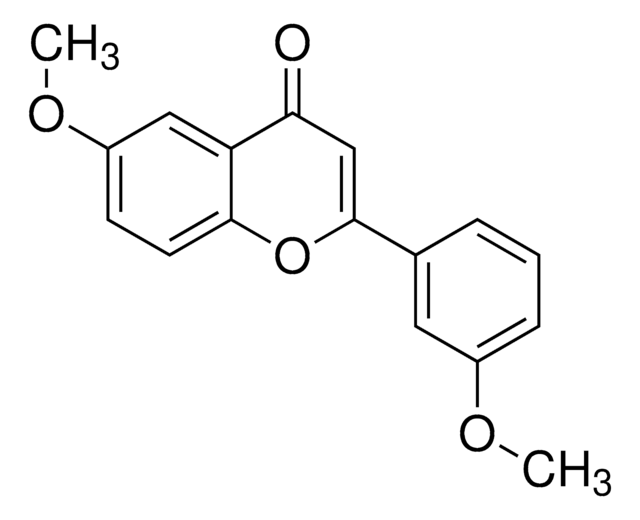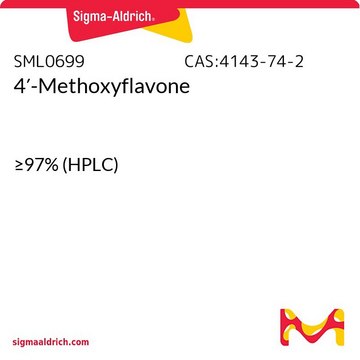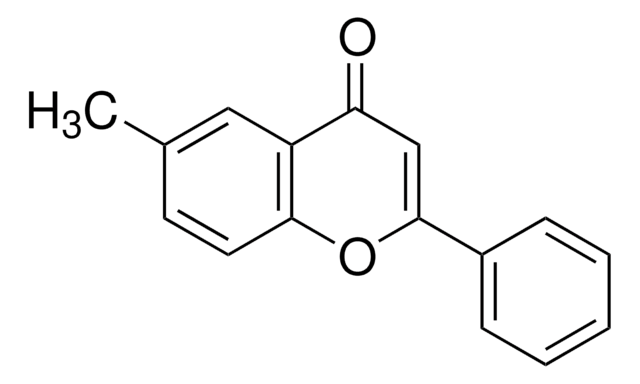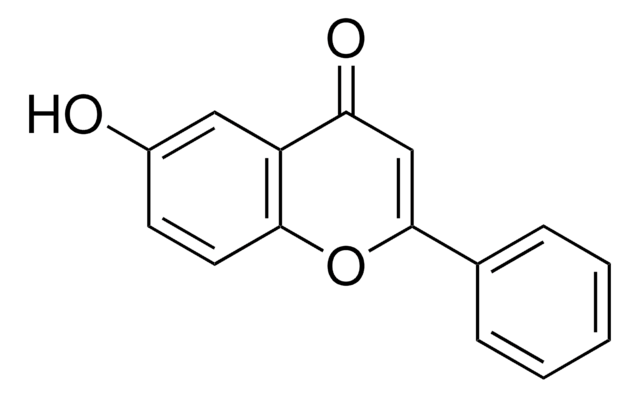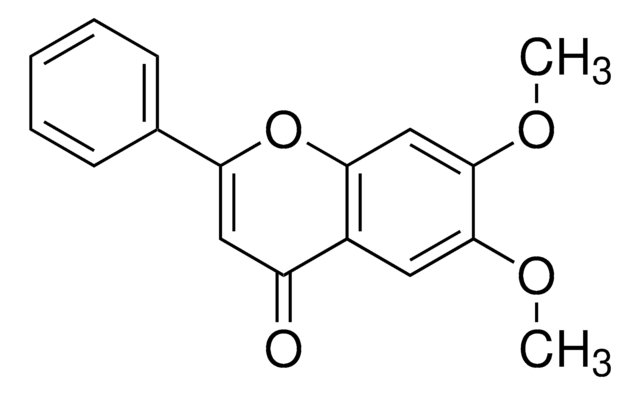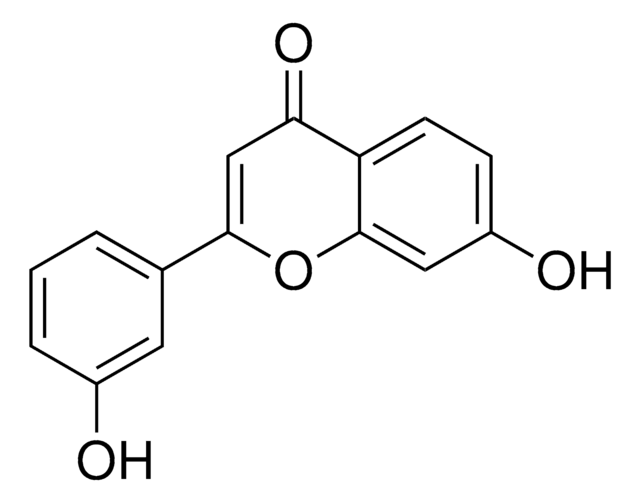全部照片(2)
About This Item
經驗公式(希爾表示法):
C16H12O3
CAS號碼:
分子量::
252.26
EC號碼:
MDL號碼:
分類程式碼代碼:
12352100
PubChem物質ID:
NACRES:
NA.22
推薦產品
品質等級
化驗
99%
形狀
solid
mp
163-165 °C (lit.)
官能基
ketone
phenyl
SMILES 字串
COc1ccc2OC(=CC(=O)c2c1)c3ccccc3
InChI
1S/C16H12O3/c1-18-12-7-8-15-13(9-12)14(17)10-16(19-15)11-5-3-2-4-6-11/h2-10H,1H3
InChI 密鑰
XZQLSABETMKIGG-UHFFFAOYSA-N
基因資訊
rat ... Gabra2(29706)
一般說明
6-Methoxyflavone is one of the methoxyflavone isolated form Pimelea decora. Synthesis of 6-methoxyflavone from p-dihydroxybenzene has been reported.
應用
6-Methoxyflavone may be employed in the following studies:
- As internal standard for the analysis of polyphenolic content of in-vitro-cultured chestnut shoots.
- Synthesis of biflavonoids, rac- and meso-6,6-dimethoxy-2,2-biflavanones.
- As internal standard for the separation of phenolic compounds in the apricot tissue by HPLC.
儲存類別代碼
11 - Combustible Solids
水污染物質分類(WGK)
WGK 2
閃點(°F)
Not applicable
閃點(°C)
Not applicable
個人防護裝備
Eyeshields, Gloves, type N95 (US)
Photohydrodimerization of 6-Methoxyflavone to 6, 6′-Dimethoxy-2, 2′-Biflavanones.
Chen A-H, et al.
J. Chin. Chem. Soc., 51(6), 1389-1394 (2004)
Pilar Errea et al.
Physiologia plantarum, 112(1), 135-141 (2001-04-25)
Graft compatibility has been studied in vitro using callus tissues of apricot (Prunus armeniaca) and different Prunus rootstocks to form scion/rootstock combinations with different degrees of graft compatibility. In these species, incompatibility is manifested by a breakdown of the trees
The constituents of Australian Pimelea species. II. The isolation of unusual flavones from P. simplex and P. decora.
Freeman PW, et al.
Australian Journal of Chemistry, 34(8), 1779-1784 (1981)
J. L. Fernandez-Lorenzo et al.
Tree physiology, 19(7), 461-466 (2003-03-26)
The phenolic contents of eight in-vitro-cultivated chestnut clones (Castanea sativa Mill. and C. sativa x C. crenata Siebold & Zucc. hybrids) were analyzed both qualitatively and quantitatively. The aim of the work was to identify potential phenolic markers of: (i)
Muhammad Shahid et al.
Biomedicine & pharmacotherapy = Biomedecine & pharmacotherapie, 95, 1725-1733 (2017-10-01)
Chemotherapy-induced peripheral neuropathy (CIPN) is a major dose limiting side-effect of several commonly used chemotherapeutic agents (such as cisplatin) that profoundly impairs patient quality of life. Unfortunately, neither prophylactic strategies nor symptomatic treatments have proven useful in this condition. Flavonoids
我們的科學家團隊在所有研究領域都有豐富的經驗,包括生命科學、材料科學、化學合成、色譜、分析等.
聯絡技術服務